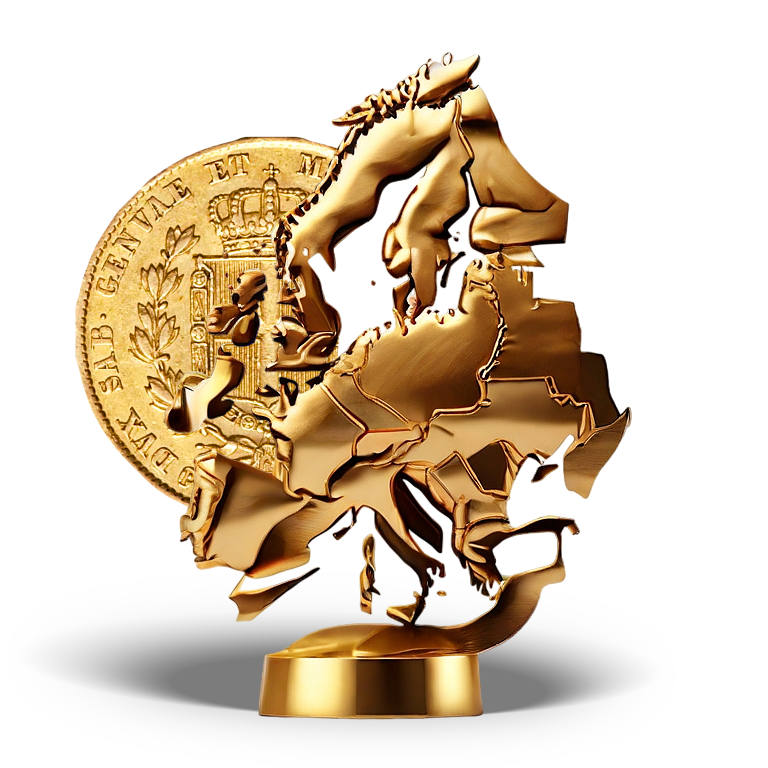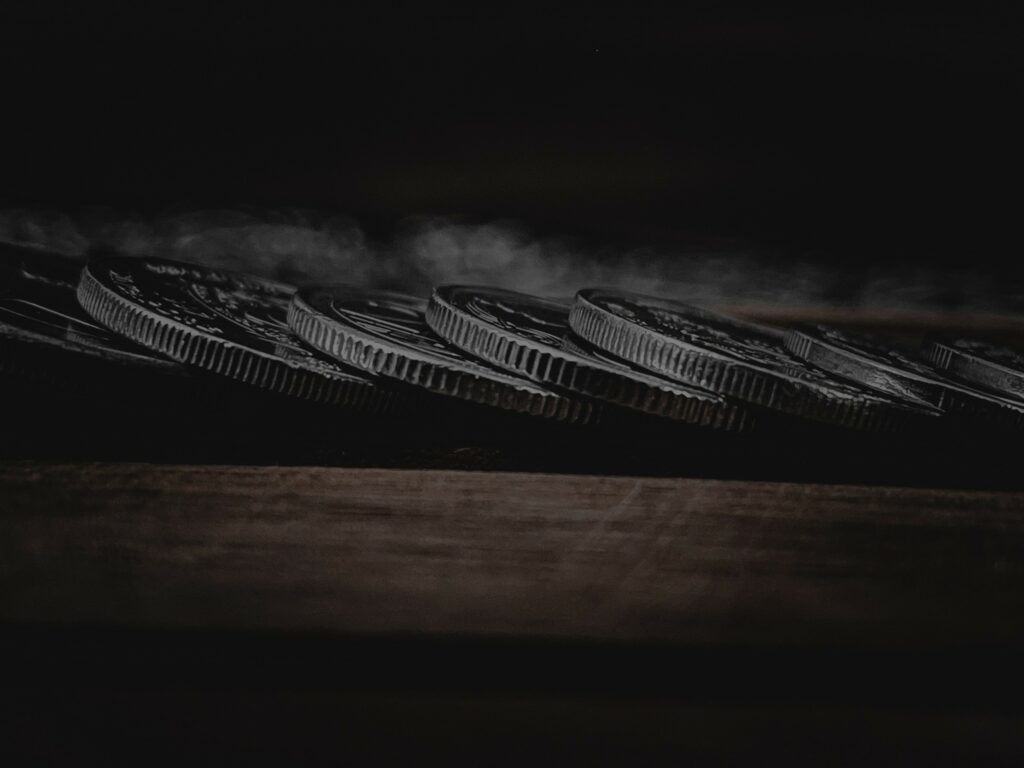
Discover all the news and articles from TNUMIS Magazine exclusively
The treasure of El Cazador
The shipwreck of El Cazador is known as one of the events that “changed the world”. Indeed, it had a significant impact on the history of the western world and has led to the current territory of the United States. It also left behind a treasure: more than 450,000 reales were found in 1993, after having been underwater for more than 200 years.
The political context of the sinking of El Cazador
The Kingdom of Spain acquired Louisiana in 1762 during the Seven Years’ War. Louis XV ceded the territory to his cousin, King Carlos III through the Treaty of Fontainebleau, a way for Louis XV to keep the precious territory of Louisiana out of British hands. The territory was gigantic, covering millions of square kilometers, from New Orleans to the Canadian borders.
The management of the colony by Spain soon proved to be complex and by the 1970s its economic situation was faltering. A wave of counterfeiting and a shortage of hard currency devalued the paper money in circulation. The solution? Replace it with valuable Spanish silver coins to replace the worthless banknote. That’s why on October 20, 1783, King Carlos III of Spain decided to send El Cazador to transport funds to save Spanish Louisiana.
El Cazador, which translates to “the hunter” in French, was a small Spanish two-masted warship, consisting of 16 cannons and a crew of about 50 people, commanded by Gabriel de Campos y Piñeda.
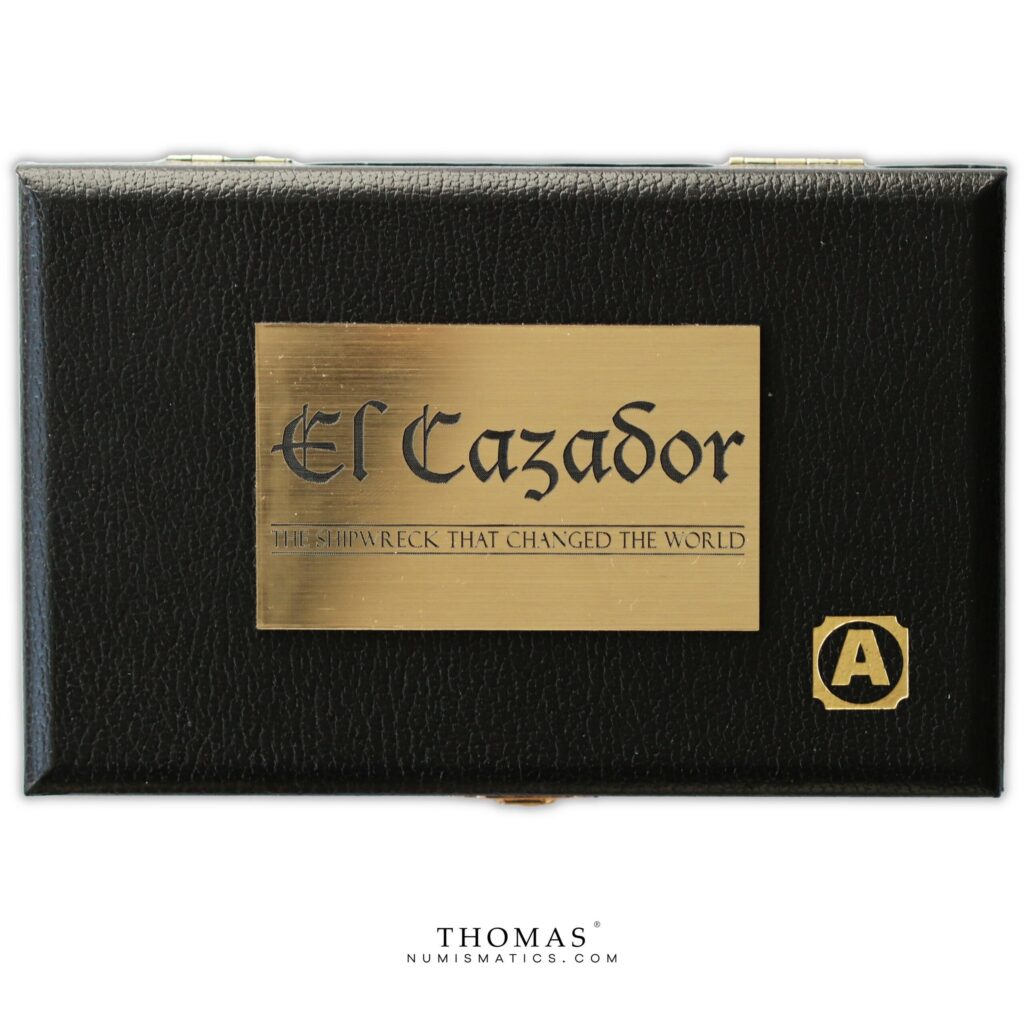
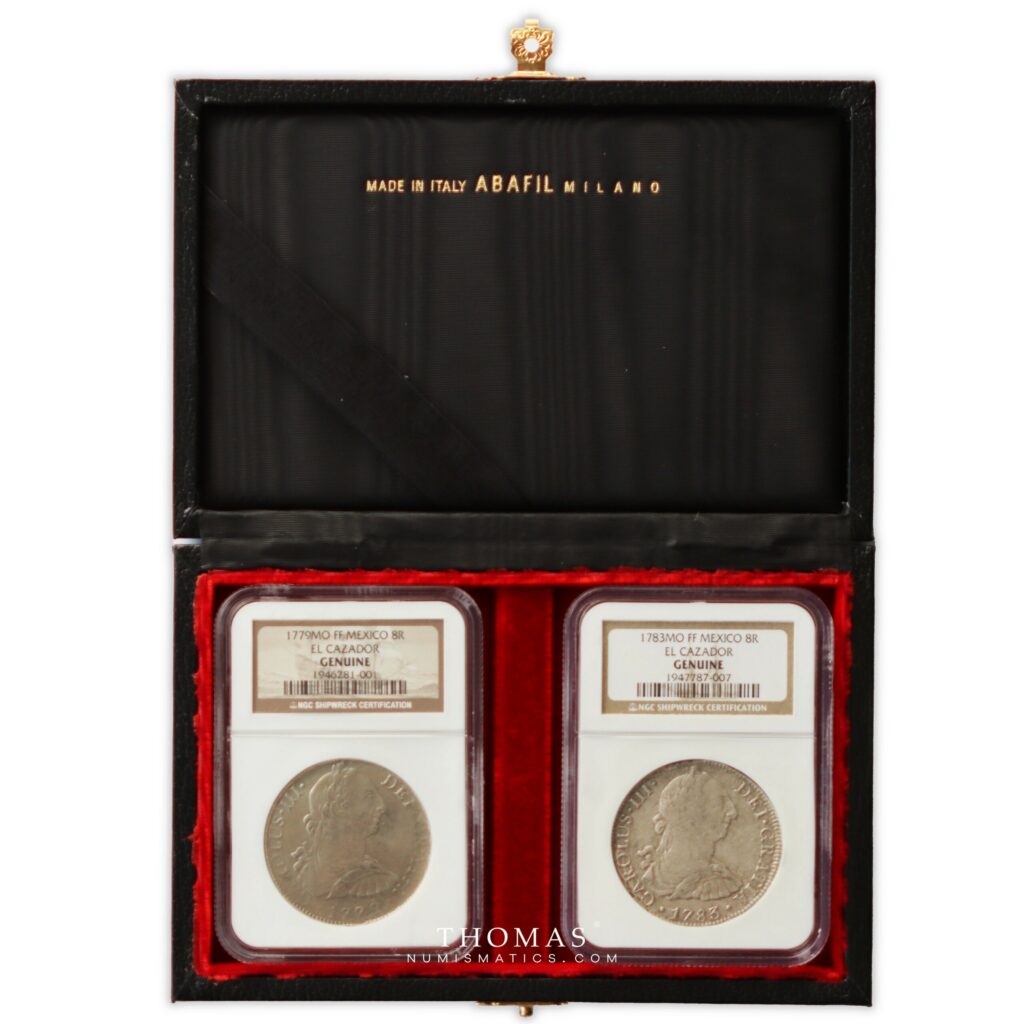
The ship sailed to Veracruz, Mexico where it was loaded with approximately 450,000 reales minted in the workshop in Mexico City, mainly in coins of eight reales which are known as “coins of eight”. They are all in the effigy of the Spanish king, Carlos III.
El Cazador was expected in January 1784 in New Orleans, the capital of the Spanish colony of Louisiana. It never arrived and disappeared on its journey, in the waters of the Gulf of Mexico. Spanish attempts to locate the ship were unsuccessful and El Cazador was officially declared missing at sea in June 1784.
This accident was dramatic for the Kingdom of Spain and its place in the New World. Unable to save the economy of the region, it had no choice but to give Louisiana back to France a few years later. On October 1, 1800, Spain and France signed the secret treaty of San Ildefonso, in which Napoleon gave the king of Spain’s son-in-law the throne of Tuscany in exchange for the territory of Louisiana. Soon, in 1803, the United States bought Louisiana from France for $15 million.
Some historians believe that if El Cazador had gone to New Orleans and its treasure had been able to support the economy, part of today’s United States would still be Spanish.
The excavation of the treasure of El Cazador
More than 200 years later, on August 2, 1993, the Mistake’s fisherman, Jerry Murphy, hooked his net into an obstacle. When the crew hoisted the net of the trawler, they discovered small blackish discs: silver coins! The treasure was located about 100 meters underwater, 80 km south of New Orleans.
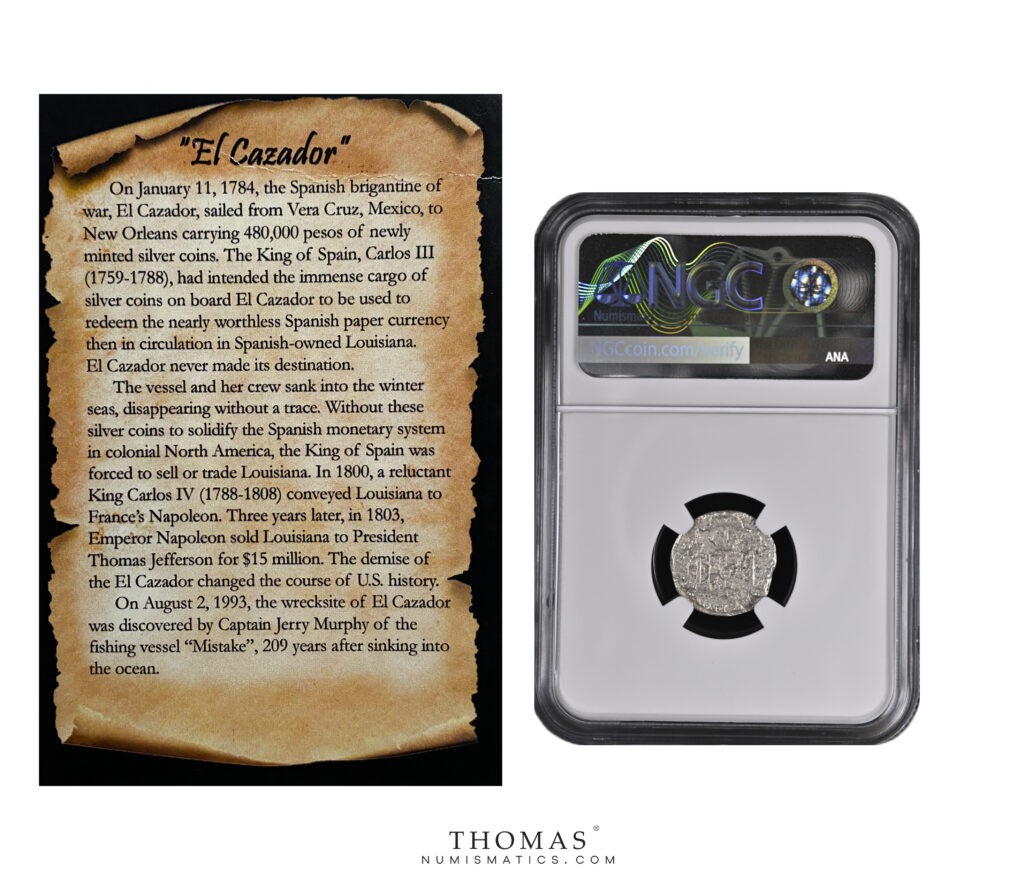
The owner of the fishing vessel, Jim Reahard of Grand Bay, contacted an admiralty lawyer in Key West, Florida, named David Paul Horan, who filed a claim on the wreck. An oil rig service company called Oceaneering is initially tasked with recovering it, but is soon replaced by Marex International Incorporated of Memphis.
In September, Marex International used sonar and a small underwater robot to find the wreck. It took about an hour to locate the target, then three days to photograph it properly with underwater video and cameras. In October and November 1993, the company brought in divers and robots to begin recovery operations.
Naval historian Robert Stenuit, a specialist in 17th and 19th century Spanish and French wrecks, finally confirmed the identification of the ship in 1994, thanks to the coins found, the cannons and the bell of the ship. El Cazador had almost reached its destination when it sank 210 years earlier.
The treasure of El Cazador was kept for a long time in a safe in the bank of Grand Bay, Alabama. Until 2004 when the executors of the Reahard estate commissioned Jonathan Lerner of Scarsdale Coin to appraise the coins. This operation was completed in February 2005.
Coins from El Cazador
The silver coins that spend so many years in contact with water, are in a very oxidized state at the time of their discovery. The reales of the treasure of El Cazador are no exception. Out of the ocean, the pieces are welded together and covered with a thick layer of chloride. They must receive an electrolytic treatment, in order not to disintegrate completely in the open air. This is the reason why the areas cleared of chloride plates gain this more or less “eaten” aspect, a characteristic of silver coins from shipwreck treasures.
The coins of El Cazador are all marked with the Spanish Mint of Mexico. They date mainly from 1783, the year before the voyage. Being of busto type, they are struck with the effigy of the Spanish sovereign, Carlos III, represented in bust and profile.
We regularly offer coins from this shipwreck treasure for sale on the shop. Contact us for their availability.
Shop
